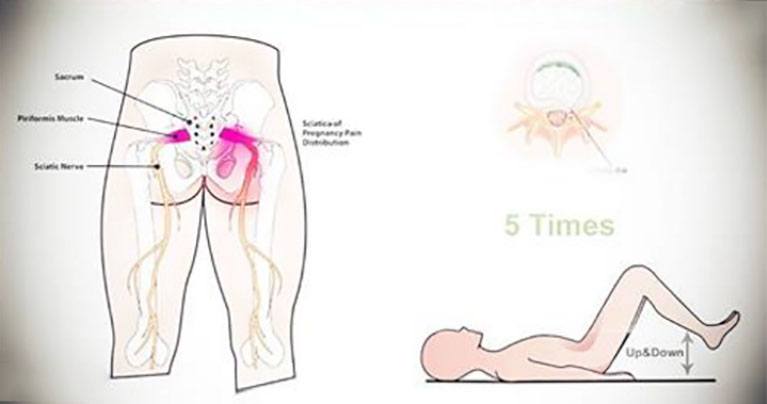You may think sciatica is a diagnosis in itself, but actually it is a symptom of an underlying medical condition. It’s a sharp pain that radiates from the low back, through the hip down the outer side of the leg(s).
In most cases, sciatica affects only one side of the body, starting from the low back all down to the foot. It occurs when the largest nerve in the human’s body – sciatic nerve, is pinched or irritated.
The symptoms can vary from rare and irritating, to persistent and debilitating pain.
Symptoms of Sciatica
Depending on the condition that has caused sciatica, the symptoms can differ in severity and location. The pain can be incapacitating, and if you don’t treat it properly and on time, it can lead to lasting sciatic nerve damage.
The symptoms of sciatica include leg pain, tingling, numbness, and weakness, and depending on the place where the nerve is pinched, they can radiate into the foot.
Causes of Sciatica
In most cases, sciatica is caused by a compression of a spinal nerve root in the lower part of the back, as a result of degeneration of an intervertebral disk in the lumbar spine. This condition is termed as Lumbar Degenerative Disc Disease, and usually happens as a result of aging.
Another cause of sciatica might be degenerative disc disease, or DDD. It happens when a weakened disk has an excessive micro-motion at that spinal level, and there’s exposure of the inflammatory proteins from inside the disk, irritating the nerve root in that location.
Sciatica might be as well caused by Lumbar Herniated Disc. It happens when the soft nucleus pulposus, or inner core of the disc, herniates, or leaks out, through annulus – fibrous outer core, irritating the contiguous nerve root.
[thrive_link color=’blue’ link=’https://www.healthandlovepage.com/10-tricks-to-beat-sciatic-pain/?c=content_button’ target=’_blank’ size=’medium’ align=’aligncenter’]10 Tricks to Beat Sciatic Pain without Taking Harmful Drugs & Painkillers![/thrive_link]
Sciatica, also known as pinched nerve or slipped disk, is an ally of the lumbar herniated disc.
Another medical condition that could be the culprit behind your sciatica is Lumbar Spinal Stenosis. It usually occurs because of narrowing of the spinal canal. This condition is common among adults over the age of 60, and it’s related to the natural aging process.
The following factors can cause narrowing of the spinal canal:
- Overgrowth of soft tissue
- Enlarged facet joints
- A bulging disc pressing the nerve roots, resulting in sciatic pain
Sacroiliac joint dysfunction – dysfunction of the sacroiliac joint, and Piriformis syndrome – when the piriformis muscle irritates the sciatic nerve, are other possible causes of sciatica pain.
Are You Ignoring Your Back Pain?
According to the U.S. NLM statistics, sciatica is the cause of 5-10 percent of lower back pain. But, you can significantly relieve the pain with the help of regular exercise. When it comes to severe sciatica, you should properly treat it to prevent the pain from worsening.
However, if exercises don’t relieve the severe sciatic pain, and the condition doesn’t improve on its own, the best approach to find sciatica relief in most cases would be surgery. The first treatment is usually managed with painkillers, and patients are often advised to continue with activities as much as they can.
[thrive_link color=’green’ link=’https://www.healthandlovepage.com/yoga-stretches-to-soothe-sciatica/?c=content_button’ target=’_blank’ size=’medium’ align=’aligncenter’]7 Simple Yoga Stretches to Soothe Sciatica Back Pain[/thrive_link]
However, surgery should be the last resort, although it’s the fastest way to relieve this debilitating pain. It’s recommended in case of bladder or bowel problems.
Other Treatment Options
Besides the usual medical treatment, and recommended exercises for sciatica, there are few more ways to treat your pain. They include acupuncture, chiropractic manipulation, and massage therapy. If you doubt you have sciatica, it’s best to consult your doctor to give you a proper diagnosis.
Via Cure Joy

